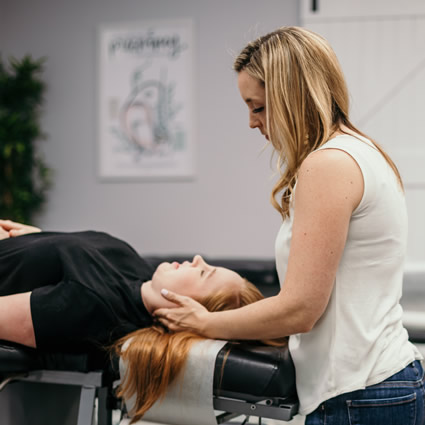 If you’ve just had your first chiropractic adjustment or are considering one, you might wonder what happens next. Feeling a mix of curiosity and apprehension about the aftermath is normal. Dr. Eric and Dr. Lauren want you to know what to expect after receiving this form of natural care.
If you’ve just had your first chiropractic adjustment or are considering one, you might wonder what happens next. Feeling a mix of curiosity and apprehension about the aftermath is normal. Dr. Eric and Dr. Lauren want you to know what to expect after receiving this form of natural care.
Experiencing Increased Soreness Is Common
During the first initial phase of care, you may experience soreness from your adjustment, a temporary increase in pain (which is rare but normal), and other areas of soreness or discomfort for the first one to two weeks of care.
This is especially true if you suffer from sciatica and other forms of nerve compression. As your nerve wakes up, it will let you know. We compare this to when you are sitting on your foot, and the blood flow is compressed. As the compression is released and your foot starts to receive adequate blood flow again, it’s uncomfortable. This is actually a sign of healing and restoration.
After this period of the nerve starting to “wake up,” we find that the nerve then starts to heal from inflammation and calm down.
Your Symptom Location May Also Change
If you find the location of your symptoms begins to change after an adjustment, that is a good sign! Your body is responding, shifting your alignment pattern. As a result, your body will start to “flush out” symptoms as the inflammation, trigger points, and muscle tension starts to change.
For example, if you are being treated for pain in your lower back or neck that is concentrated on one side, it is common for those symptoms to be experienced in the center of the spine. It is also possible that they may be traced to the other side of the body, where you may not have had those symptoms before.
This is part of the healing process. As healing takes place and your spine is realigning, your symptoms may move around and even feel different than they did initially.
Healing Advice From Your Trusted Partners in Health
Though these symptoms we’ve discussed may be a normal part of the healing process, there are still ways you can alleviate their impact on your life.
Make Time to Ice
Ice can be used for 20 minutes at a time with a 40-minute break in between, a few times in a row if necessary. This will help decrease inflammation. Heat is not recommended, as it increases inflammation, though using “wet” heat—like a hot shower—combined with safe levels of stretching, followed by ice, is fine. This helps pump the inflammation out.
Listen to Your Body
While your body is acclimating to chiropractic, it’s not the time to push yourself hard at the gym, in the yard, etc. Normal daily activities are fine, but rest when your body wants to rest and focus on restorative rather than taxing things. Don’t overdo it.
Hydrate & Eat Nutritious Food
Drinking a minimum of a minimum of 80 oz of water a day, shooting for 120 oz, is key to flushing out pain and inflammatory chemicals that have been built up in your joints and surrounding tissue. What you eat should also be healing, including more organic fruits and vegetables and less grains, sugars, processed foods, and caffeine. Our food instructs our body on how to function like our nervous system does. The better the fuel, the more your body will receive instructions for healing!
Stay Committed for Long-Term Results
Healing is not a linear process. Your healing will occur in cycles, and each adjustment builds on the last, resulting in a cumulative effect. Those who stick to their doctor’s recommendations get the absolute best results. You may start sleeping better, feeling more energized, feeling less foggy-headed, and having better digestion before your original symptoms, like headaches, low back pain, or fertility, start to improve and resolve.
Better Health Is Just an Adjustment Away!
Experience for yourself the remarkable benefits of chiropractic care. Contact Restoring Life Chiropractic today to schedule an appointment!
CONTACT US »
